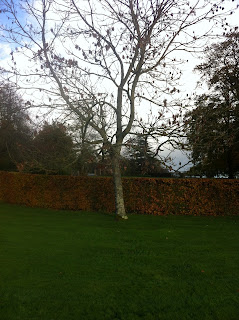Here in this part of Devon we have had a long standing relationship with Ash.
It is one of the fastest growing trees so there has been a chance of seeing ash trees grow nearly to maturity within your lifetime. It results in a less dense canopy in summer with its delicate feathery pinnate leaves than some others allowing more undergrowth and variety of flora at ground level. It doesn't seem to attract grey squirrels and thus remains undamaged in young plantations while the squirrels wreck the beech, hornbeam, oak and sycamore. The grey bark and recognisable buds are a feature of so many of our copses and hedgerows as well as woods.
Its wood is prized for some specialised uses such as handles and hockey sticks but of course it is the best of all timber for logs; burning well when still fresh.Our family has a tradition of burning the ashen faggot at Christmas. The bundle of ash sticks are wrapped with three withy (willow) bands and if you guess the first one to burst when they are heated you will have luck in the following year.
Walter Pitts who used to work on the farm was fond of the saying 'oak before ash we shall have splash; ash before oak we shall have soak'. This year the ash trees came out before the oaks and the rain has never stopped.Mind you Walter was never wrong so he was always able to adapt the facts to fit reality!
 |
| young Ash tree |
Yet in truth the ash is a boring tree in some ways too. It's fast growing, invasive nature makes it a competitor for other trees.This is fine when you need pioneer trees on poor soil- less good when it prevents other trees having the space to develop. We have a self seeded ash playing havoc with a wisaria plant that we cannot defeat and loads of self seeded ash in amongst a mixed broadleaf copse. While its winged 'helicopter' seeds help it to spread easily its autumnal display is dull and not a patch on the beeches that are in full display at the moment.
Nevertheless the potential loss of so many trees must be viewed with trepidation. We will recover of course- as we did from Dutch Elm disease and from the great storms of 1987 and 1990. The prospect of more disruption to our native trees- the fantastic architectural backdrop to our landscape- must be a real concern however. The degree to which we appear to be under threat now as a result of climate change and the free movement of products around the world suggests to me that, in addition to improving our defences and our vigilance, we need to be ensuring that our research and development is properly resourced. The general public seem to take trees for granted. Perhaps chalara fraxinea will change that. I hope too that the scientists will be able to learn from those ash trees that have survived in Denmark and help us to develop varieties that are resistant so that once again people will learn that
'ash wood green and ash wood brown
are fit for a Queen with a golden crown'


No comments:
Post a Comment